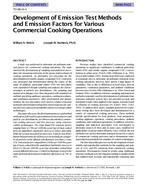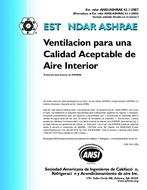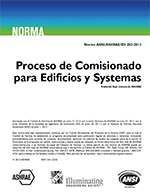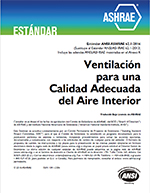Description
A study was performed to determine air-pollutant emission factors for commercial cooking operations. The study involved the development of sampling and analytical procedures for measuring emissions in the grease-laden exhaust of cooking operations. An alternative test procedure for the determination of volatile organic compound (VOC) emissions was developed and demonstrated during the course of the study. In addition, particulate matter (PM) test procedures were expanded to include sampling and analyses for characterization of particle size distributions. The sampling and analytical techniques were then integrated with standard test methods specifying appliance operation, cooking procedures, and ventilation parameters. After development and demonstration, the new procedures were used to conduct emissions testing for determination of baseline emission factors for various processes and a selected number of processes using control technologies.
This paper discusses the development process and method verification, followed by a presentation of emission factors and particle size distributions, for thirteen uncontrolled commercial cooking processes and five processes using emission-control technologies. The study found PM emission factors ranging from 32.7 lbs per 1000 lbs (g per kg) of meat cooked from an underfired charbroiler process to below detectable limits for several deep fat fryer processes. Particle-size distribution measurements for all processes tested indicate a majority of particles in the effluent with diameters less than 2.5 mm. VOC emission factors ranged from 3.94 lbs per 1000 lbs (g per kg) of meat cooked from the underfired charbroiler process to below 0.1 lbs per 1000 lbs (g per kg) of product cooked from several different processes. Control technologies tested in the study demonstrated emission reduction efficiencies of 79% to 95%.
Units: Dual
Citation: Symposium, ASHRAE Transactions, 1998, Vol. 104, Part 2, Toronto, ON
Product Details
- Published:
- 1998
- Number of Pages:
- 11
- File Size:
- 1 file , 200 KB
- Product Code(s):
- D-7737




